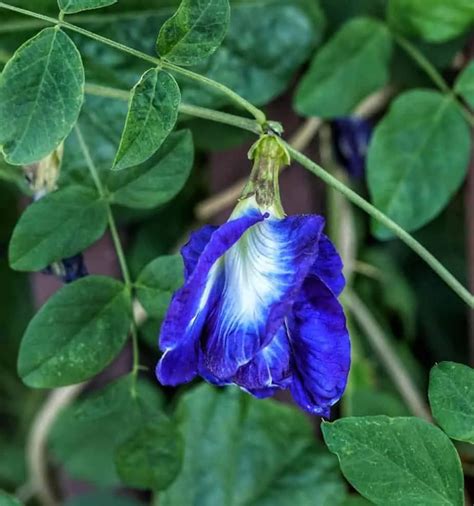The Blue Butterfly Pea, also known as Clitoria ternatea, is a plant species that has been used for centuries in traditional medicine and as a natural food coloring. Native to tropical Asia, this flowering plant is renowned for its vibrant blue flowers, which are used to make a natural dye. The Blue Butterfly Pea has been a subject of interest in recent years due to its potential health benefits and versatility in culinary applications. In this article, we will delve into the history, nutritional value, and uses of the Blue Butterfly Pea, as well as explore its potential health benefits and cultural significance.
Key Points
- The Blue Butterfly Pea is a rich source of antioxidants and has anti-inflammatory properties.
- It has been used in traditional medicine for centuries to treat various health conditions, including fever, cough, and skin disorders.
- The plant's flowers can be used as a natural food coloring, and its leaves and stems can be used in salads and as a vegetable.
- The Blue Butterfly Pea has been shown to have potential health benefits, including reducing stress and anxiety, and improving cognitive function.
- It is also used in traditional ceremonies and rituals in many Asian cultures, and is considered a symbol of good luck and prosperity.
Nutritional Value and Health Benefits

The Blue Butterfly Pea is a nutrient-rich plant that contains a range of vitamins, minerals, and antioxidants. It is a good source of vitamin C, vitamin E, and beta-carotene, as well as minerals such as potassium and magnesium. The plant’s antioxidant properties have been shown to have anti-inflammatory effects, which may help to reduce the risk of chronic diseases such as heart disease, diabetes, and cancer.
Traditional Medicine and Culinary Uses
The Blue Butterfly Pea has been used in traditional medicine for centuries to treat a range of health conditions, including fever, cough, and skin disorders. The plant’s leaves and stems can be used in salads and as a vegetable, while its flowers can be used as a natural food coloring. In many Asian cultures, the Blue Butterfly Pea is used in traditional ceremonies and rituals, and is considered a symbol of good luck and prosperity.
| Nutrient | Amount per 100g |
|---|---|
| Vitamin C | 10.2mg |
| Vitamin E | 1.5mg |
| Beta-carotene | 2.5mg |
| Potassium | 350mg |
| Magnesium | 50mg |

Cultural Significance and Traditional Ceremonies

The Blue Butterfly Pea has significant cultural and traditional importance in many Asian cultures. In Thailand, for example, the plant is used in traditional ceremonies to promote good luck and prosperity. In India, the Blue Butterfly Pea is considered a sacred plant and is used in Ayurvedic medicine to treat a range of health conditions. The plant’s vibrant blue flowers are also used in traditional Indian weddings and ceremonies to symbolize love and fidelity.
Modern Uses and Applications
In recent years, the Blue Butterfly Pea has gained popularity as a natural food coloring and ingredient in the food and beverage industry. The plant’s flowers can be used to make a range of products, including tea, coffee, and ice cream. The Blue Butterfly Pea is also used in the cosmetics industry as a natural ingredient in skincare products, due to its antioxidant and anti-inflammatory properties.
What are the potential health benefits of the Blue Butterfly Pea?
+The Blue Butterfly Pea has been shown to have potential health benefits, including reducing stress and anxiety, and improving cognitive function. Its antioxidant and anti-inflammatory properties may also help to reduce the risk of chronic diseases such as heart disease, diabetes, and cancer.
How is the Blue Butterfly Pea used in traditional medicine?
+The Blue Butterfly Pea has been used in traditional medicine for centuries to treat a range of health conditions, including fever, cough, and skin disorders. The plant's leaves and stems can be used in salads and as a vegetable, while its flowers can be used as a natural food coloring.
What are some modern uses and applications of the Blue Butterfly Pea?
+The Blue Butterfly Pea is used in the food and beverage industry as a natural food coloring and ingredient. It is also used in the cosmetics industry as a natural ingredient in skincare products, due to its antioxidant and anti-inflammatory properties.
In conclusion, the Blue Butterfly Pea is a versatile and nutrient-rich plant that has been used for centuries in traditional medicine and as a natural food coloring. Its potential health benefits, cultural significance, and modern uses make it a valuable and interesting plant that warrants further research and exploration.



